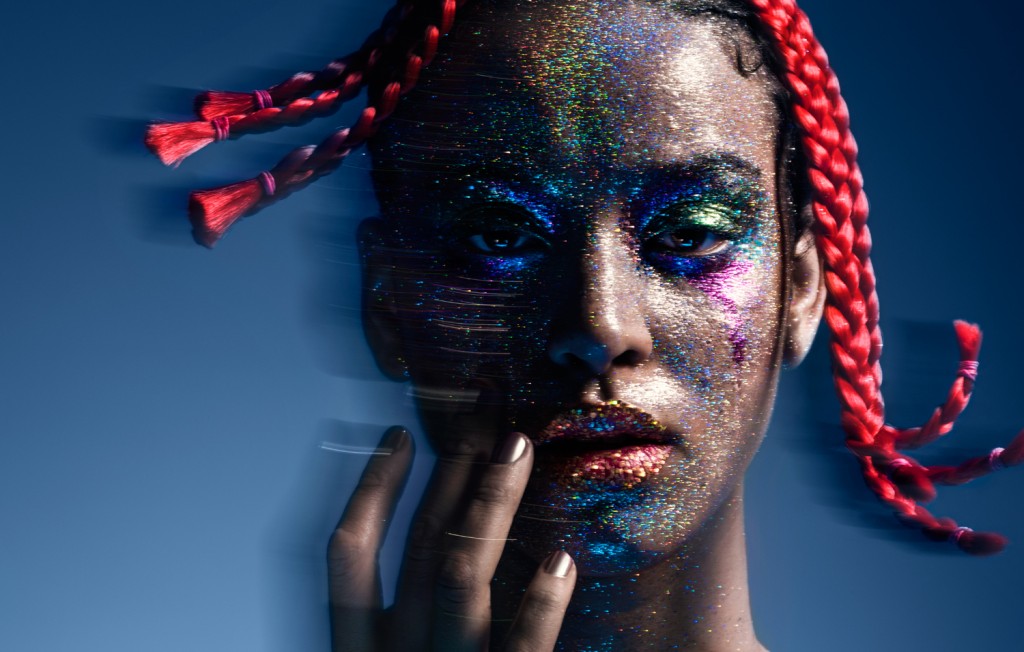
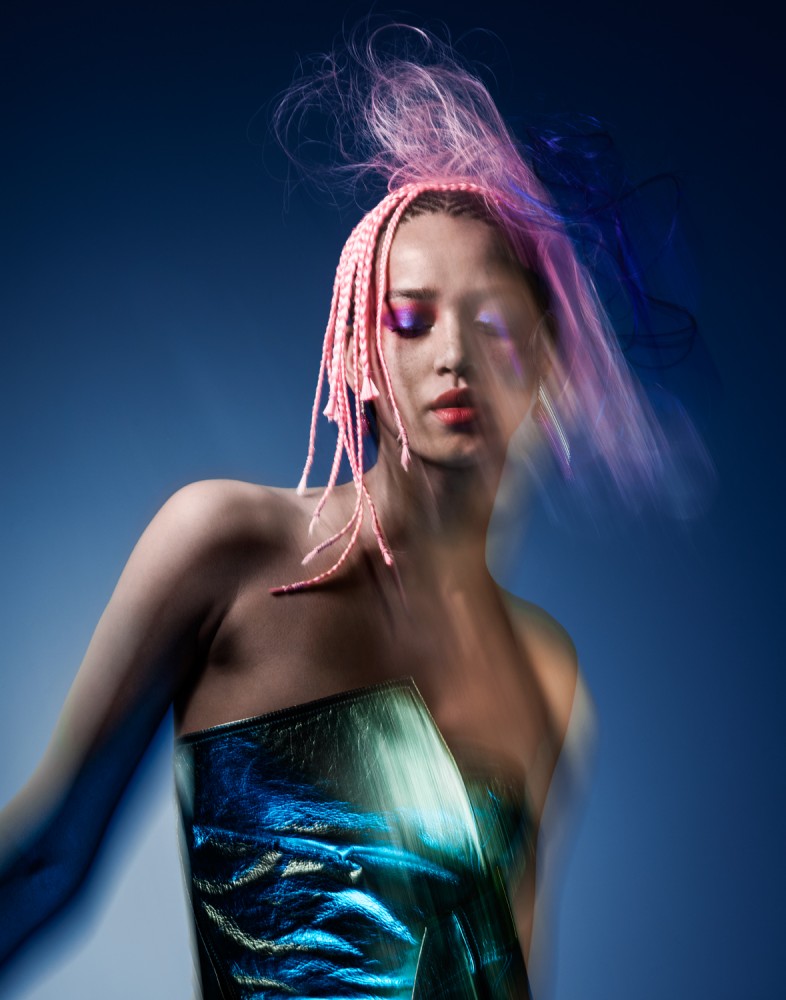
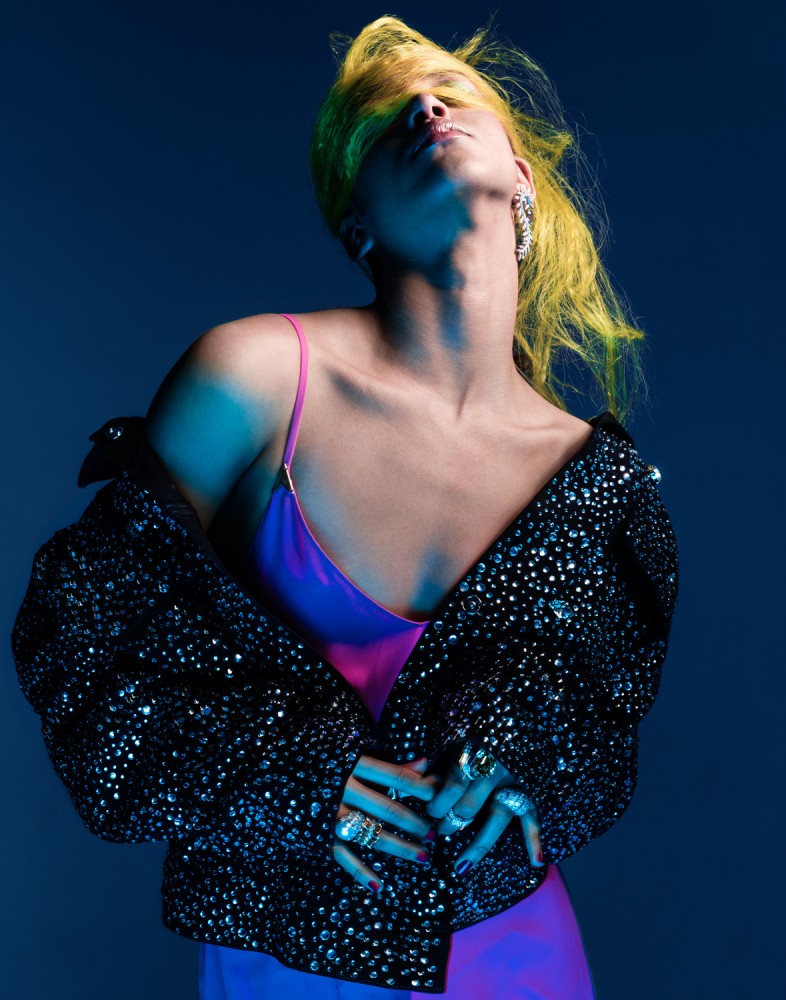
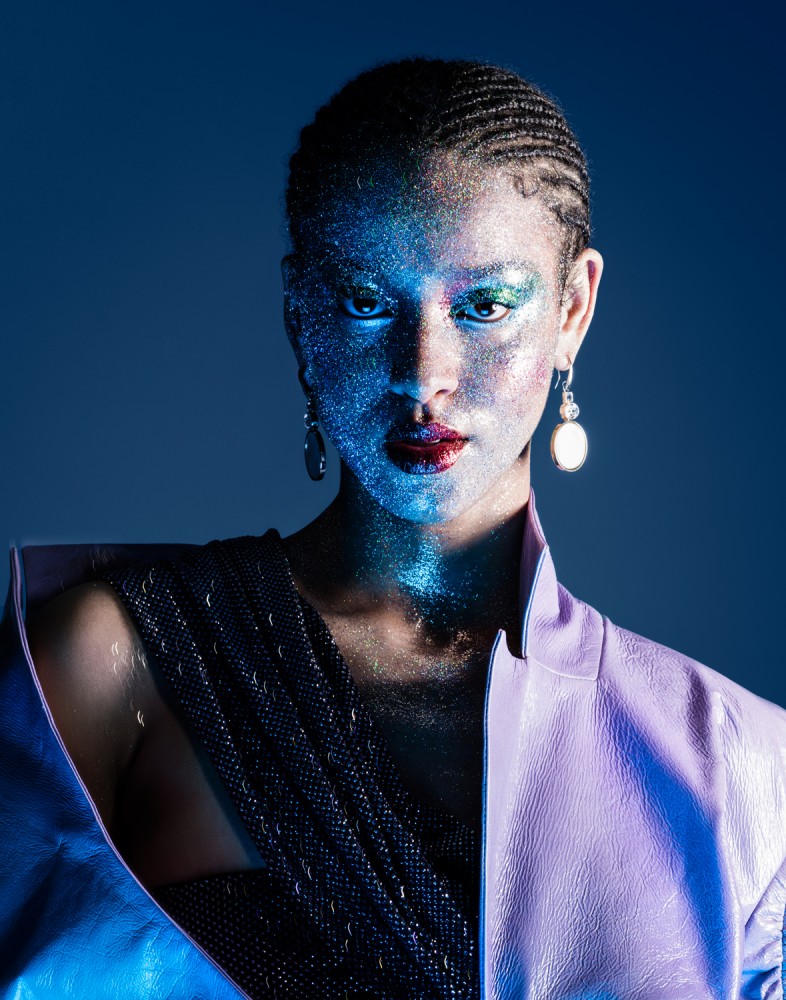
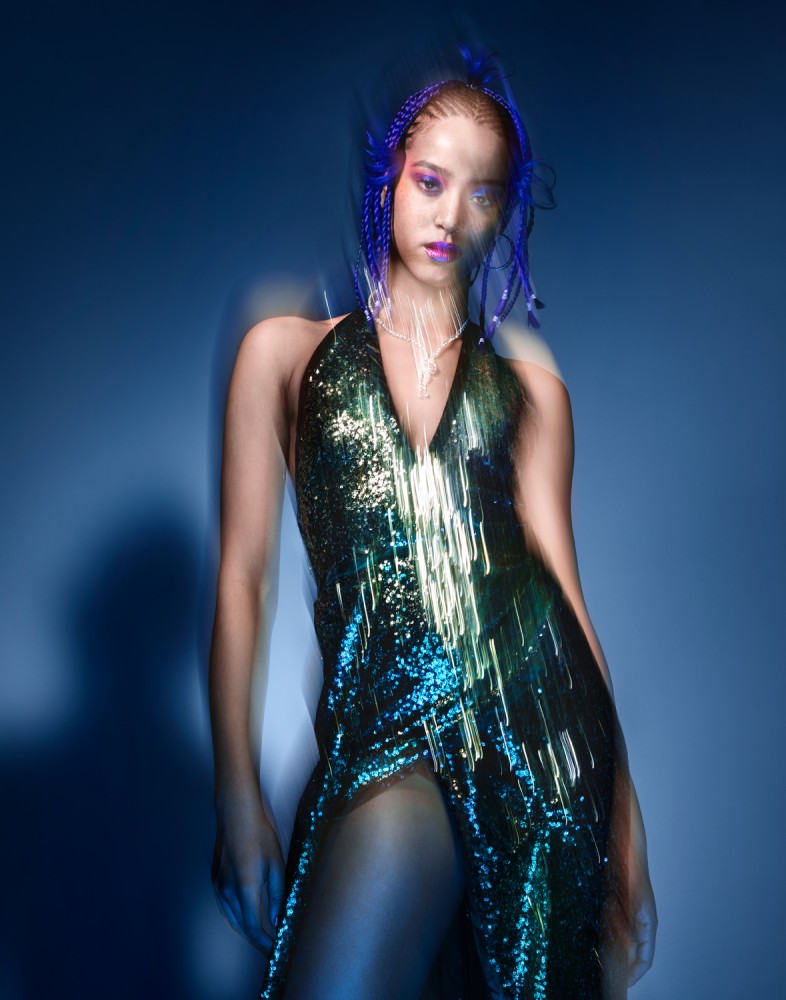
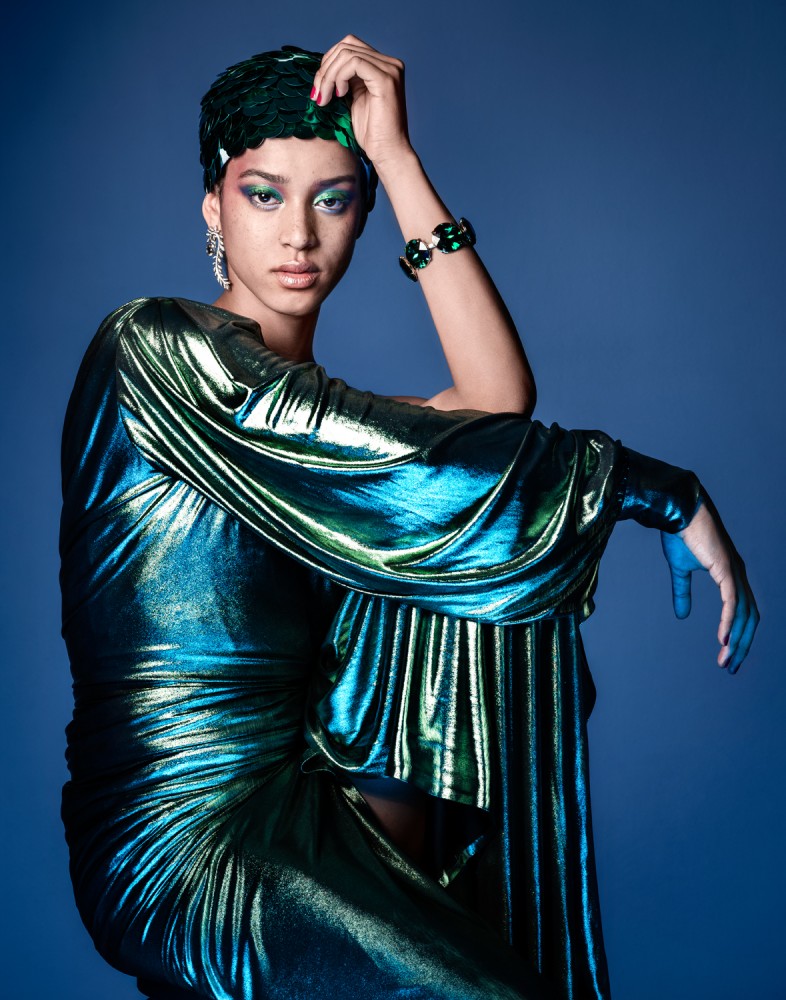
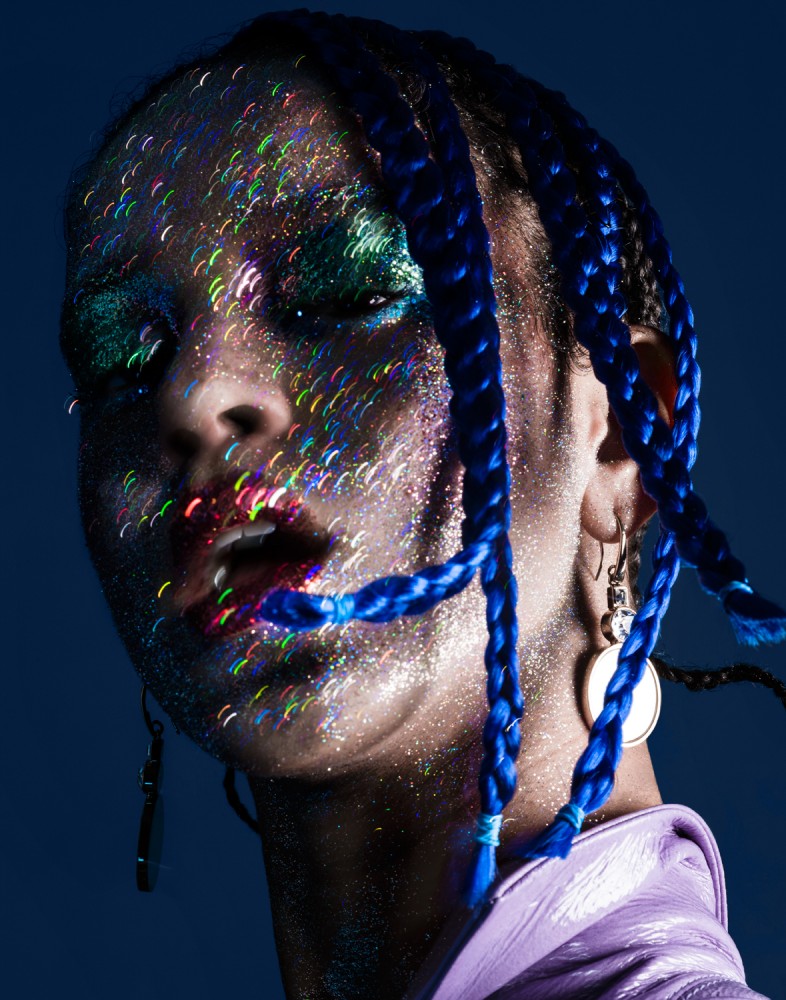









INTERVIEW
Benjamin Kaufmann
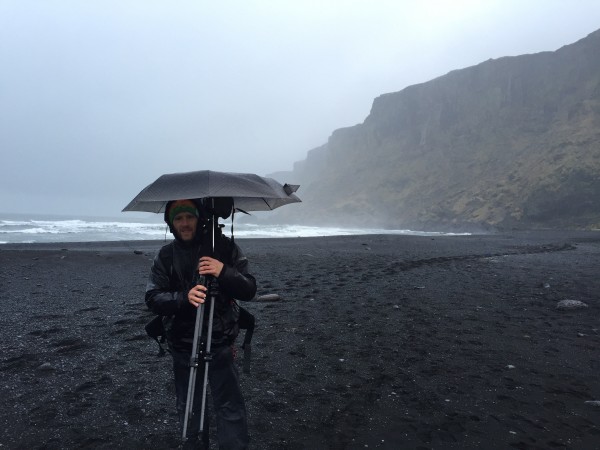
PHOTOGRAPHY Banjamin Kaufmann STYLING Sarah Cazeneuve HAIR Olivier Lebrun MAKEUP Julie Nozières MODEL Flora Carter @ M Management CAMERA Leica S (Typ 007) with Summarit-S 70 f/2.5 ASPH. (CS) and APO-Macro-Summarit-S 120 f/2.5 (CS)
Trendy glitter dominates ‘Motion Blur’ by Benjamin Kaufmann – flowing movements and effective lighting lend Flora Carter’s face a colourful and enchanting aura.
Movement and colour play a big role in Motion Blur. What’s the idea behind it and did you use a specific technique to take the pictures?
The starting point was the current ‘glitter’ trend. What the eye sees are only frozen photographic moments transmitted in a very limited manner. That’s why we experimented with movement, lighting and colour to make the glitter visible.
What tendencies do you see in fashion photography right now?
The biggest tendency is towards the acceptance of diversity, celebrating individuality, and focussing on personalities who have managed to draw attention to themselves via social media.
What photographic influences are reflected in your work?
In fact, my pictures are always influenced by the classics – from photography but also from painting. The actual content develops continuously and reflects my personal experiences and my surroundings. I’m also happy to let the ideas of talented and inspired people excite me, and to then realise those ideas as a team.
What else influences you? Where do you see yourself in this regard?
The basis is always a simple idea. I see myself as the person who brings together enthusiastic and motivated people, to discuss and to realise this idea together, in such a manner that we can surprise the viewer to some degree, and, in the best case scenario, inspire.
You work in a conceptual manner and you prepare yourself very intensely for your photo shoots. Are you a perfectionist?
As far as I’m concerned, solid preparation is a basic requirement; but, for me, perfection also means no deliberate planning or wanting to predict anything, because you would otherwise seriously limit the creative process and the unusual moments that arise during production.
How do you relate to spontaneity in your work?
My basic premise is to allow space for the unexpected. The unpredictable will always give rise to something unusual. However, this happens best when you are well prepared.
Do you prefer to work with the same people, or do you also try out something new?
In fact, it’s both. Long-term working relationships makes it easier to work on larger ideas, and to pursue projects that build on each other. In many cases, you can clearly see that the security of the team is a decisive advantage, because you can focus on solving the, at times, complex challenges.
Cooperating with new artists can lead to very fascinating discussions, even misunderstandings, which, however, can in turn lead to unusual interpretations.
I firmly believe that you should often and regularly step outside your comfort zone so as to avoid falling into a routine.
In addition to fashion and beauty, you photograph landscapes. Does the S system adapt well to both photographic genres?
In fact, it adapts very well. The S system is very compact and, consequently, can be taken anywhere in the world with no problem. The very high quality, also at high ISO values, allows me to use it in every situation. Like all Leicas, the S system has something reassuring about it. You linger longer, observe more precisely and, consequently, get intentionally composed images.